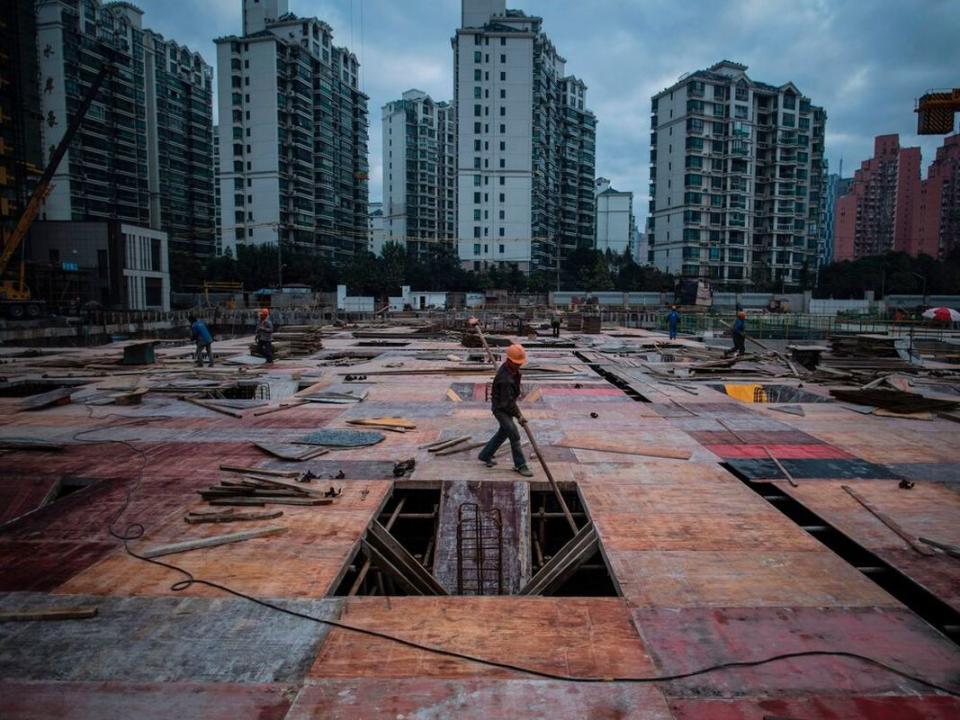Diane Francis: China facing multiple debt crises

TikTok and Taiwan dominate the news concerning China. But the real story is that Beijing is in financial trouble.
In January, a Hong Kong court ordered that one of China’s largest property developers, Evergrande, undergo liquidation, after it had taken on US$300 billion ($406 billion) in debts. And this month, its second gigantic real estate developer, Vanke, was downgraded to “junk” status by Moody’s and has the country’s state-owned banks scrambling to help it meet its repayment deadlines.
Many more Chinese enterprises are struggling. Its stock markets have dropped considerably over the past year, and youth unemployment is soaring.
“China’s Communist leaders on (March 5) set a goal of five per cent economic growth for this year, and the fact that this target is being described as ‘ambitious’ is a sign of Beijing’s economic troubles. It’s not clear President Xi Jinping can deliver even on this target,” wrote the Wall Street Journal.
China’s fall from grace began with COVID, but has also been caused by grievous errors of judgment made by Xi, who’s now a dictator for life. He turned the country into a casino by deregulating everything, and stripped the private assets of some of the country’s most successful entrepreneurs — tycoons like Jack Ma, who built Alibaba Group Holdings Ltd.
Xi further damaged the country’s reputation and prospects by not denouncing Russian President Vladimir Putin and his genocidal war against Ukraine, which has upset the West. Yet the fact remains that a diminished Beijing is a good outcome. Weak countries don’t invade their neighbours.
China is now juggling three debt crises: its domestic real estate bubble, its high infrastructure spending and its Belt and Road Initiative to build bridges, dams and ports in foreign countries to cultivate global allies.
“Investors in China have had a lost decade or more already,” wrote James Mackintosh in the Wall Street Journal last summer. “Put simply, China borrowed and invested way too much into unproductive assets such as housing, while suppressing consumption.”
The biggest problem involves China’s local governments, which competed with one another to build fancy infrastructure and housing, often resorting to off-the-books borrowing to finance the projects. According to an article last year in Caixin Global, “These liabilities are estimated by some to be almost $10 trillion, roughly double the GDP of Japan, the world’s third-largest economy.”
The Belt and Road is another bust. A report last November from AidData, a research institute at the College of William and Mary in Virginia, found that developing countries, most of which are in financial distress, owe China at least US$1.1 trillion.
Such economic mismanagement will stunt growth in China for years.
“An overly indebted Chinese economy cannot afford to roll out a massive stimulus, even when confronting the possibility of a full-blown property market crisis. China thus faces a much slower growth trajectory for the foreseeable future,” wrote Stephen Roach, an American economist, China expert and Yale University lecturer, last August in the Asset.
“Barring a successful consumer-led rebalancing, it will be exceedingly difficult for China to recapture its previous growth momentum. Since the 2008 global financial crisis, the economy has grown about seven per cent, on average, accounting for nearly 35 per cent of the cumulative increase in world GDP during the same period. If China’s growth rate slows to three per cent to four per cent — a distinct possibility — its contribution to global growth will be halved, with obvious knock-on effects for the rest of the world.”
China let countries borrow too much. As a result, it is now the biggest “debt collector” in the world. And it is now forced to provide US$80 billion a year in aid and credit to support its struggling “clientele,” in order to avoid defaults and divert attention from its domestic troubles.
Besides financial problems, China also has a demographic problem, with an aging population and high youth unemployment. Japan had similar challenges and suffered from economic stagnation for decades. China’s debt problems will preoccupy the country for decades and slow global economic growth.
